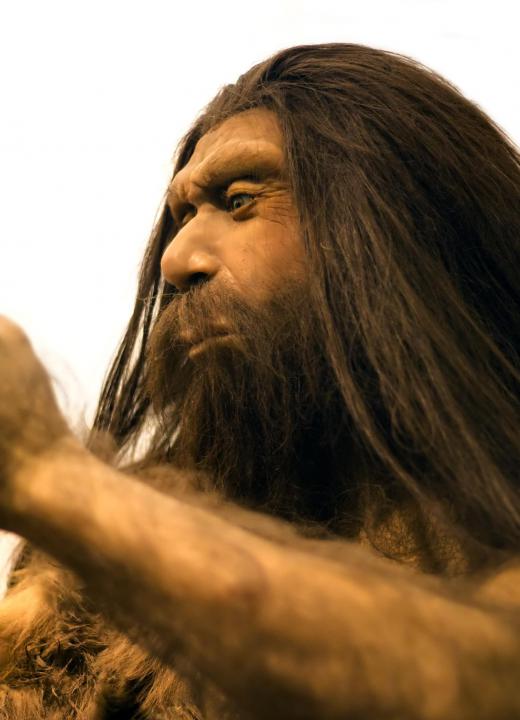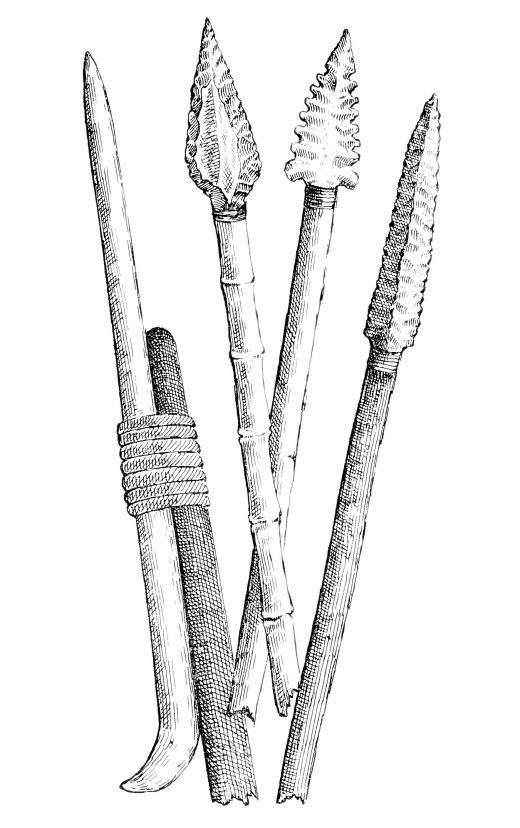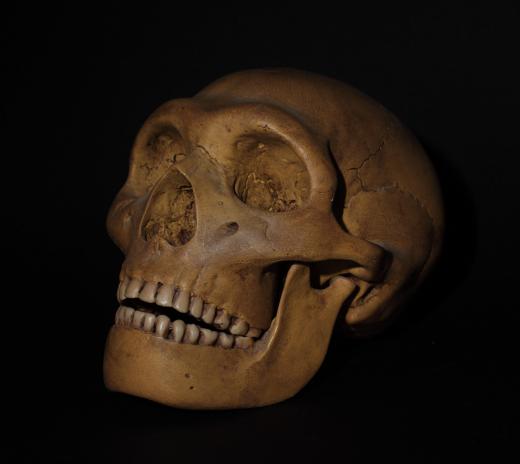What are Neanderthals?
 Michael Anissimov
Michael Anissimov
Neanderthals are an extinct species of the genus Homo, which includes humans and many of our ancestors and their evolutionary spinoffs. Neanderthals only existed between about 130,000 and 24,000 years ago, and can be thought of as an early human adapted to harsh Ice Age climates. They were relatively short (average height 5’ 5’’ for males, a few inches short for females) but well-built. In fact, mutual exposure between Neanderthals and early modern humans may have contributed to the folk mythological notion of a dwarf. Neanderthals had low, flat, elongated skulls, projecting mid-faces, a brain case 10% larger than humans, and a couple dozen other physical features that make them distinct from modern humans, as well as dismissing the idea that Neanderthals were just a subspecies of Homo sapiens.
Neanderthals never existed in very large numbers; scientists figure that there were never more than about 10,000 individuals at any given time. About 400 Neanderthal fossils have been found, some with portions of soft tissue preserved, allowing for access to genetic material. Like other members of the Homo genus, Neanderthals lived in tribal groups ranging from about 20 to 200 members.

Being the most recent Homo species to go extinct, Neanderthals were advanced in their technology and culture relative to earlier species such as Homo habilis or Homo erectus. Their stone industry is referred to as Mousterian, and featured sharp double-edged weapons, including axes, scrapers, spears, and more. There is even some evidence that Neanderthals made spears for use as projectiles, a practice normally associated just with our own species, Homo sapiens. Neanderthals engaged in other complex activities normally associated with modern humans: ritual burials, sophisticated shelters, use of fire, and skinning animals. Like some human groups, there is also evidence that they practiced mortuary cannibalism, possibly a side effect of food scarcity on the European and Asian tundra.

There is strong anatomical and genetic evidence that Neanderthals had language or some form of speech more complex than just grunting. They possessed a hyoid bone, which connects the tongue to the larynx, allowing a much wider range of tongue and laryngeal movements than other primates. Studies of the Neanderthal ear from fossils suggest sensitivity to a range of sounds, and DNA extracted from bones show the presence of the same version of the FOXP2 gene as modern humans, a gene known to play a close role in human language.

Because Neanderthals have not been extinct for very long, their DNA is readily extractable from the right bones, and it is thought the Neanderthal genome will be sequenced in the near future. This opens up the possibility of reviving Neanderthals, by synthesizing their complete genome and injecting it into a fertilized egg and growing the resulting fetus in a human womb. The revival of Neanderthals would be one of the greatest scientific accomplishments in all of history, but presents a challenging set of ethical questions.
AS FEATURED ON:
AS FEATURED ON:













Discussion Comments
Ancient folktales of Dwarves describe the neanderthal perfectly. An Elder race that lived in the northern lands and had a knack for craftsmanship. Long before Homo sapiens came on the scene, neanderthals were adapting to the northern climate. This means clothing, tools, weapons, and even jewelry was crafted by these ancient Dwarves.
It is likely the first axe fastened to a handle was developed by them and hence the association between Dwarves and axes. During their time they likely encountered orcs (Homo Erectus) trolls (Hiedelberg man} and Bushmen (Homo Sapiens) and even Giants (Mammoth). When they interbred with bushmen a new hybrid race was created: cro magnon man (the white race) - who still sport the beards and and red hair of their ancient Dwarf ancestors.
Since when does science care about ethics? I don't even consider myself a humanitarian/Green-peacer, but ethics has really never come into question throughout scientific advancements of history.
130,000 years is not far enough back in time. Heidelberg man was in Europe long before Neanderthals and they are most likely the same lineage. Heidelbergs became like dwarfs from living in ice age conditions and grew red beards much like the elephants and rhinos living in the same environment. Both Heidelberg and Neanderthal could not have survived the northern climate without being able to sew clothing and snow suits, so it's likely they were more advanced than early Homo Sapiens.
@Anon275073: Well, humans are really technically animals and really, Neanderthals are pretty smart and considered human, I think.
Would the Neanderthal be considered human or animal? Or something in between? If they were considered human, they would be given the rights and respect every human ideally receives. If they were considered animals, they would likely be locked up in a zoo to be tested and observed. If they were considered something in between, how would they be treated? We've never had to deal with something neither human nor animal before.
We have enough prejudice within our own species, so you can imagine the kind of prejudice there would be against Neanderthals, which are non-humans. As a non-human, would the Neanderthal have the inalienable rights most believe all humans deserve? Some would think not and that would cause some problems.
The article mentions that a challenging set of ethical questions would arise from attempts to revive the Neanderthals. Please suggest what some of these questions might be.
Post your comments